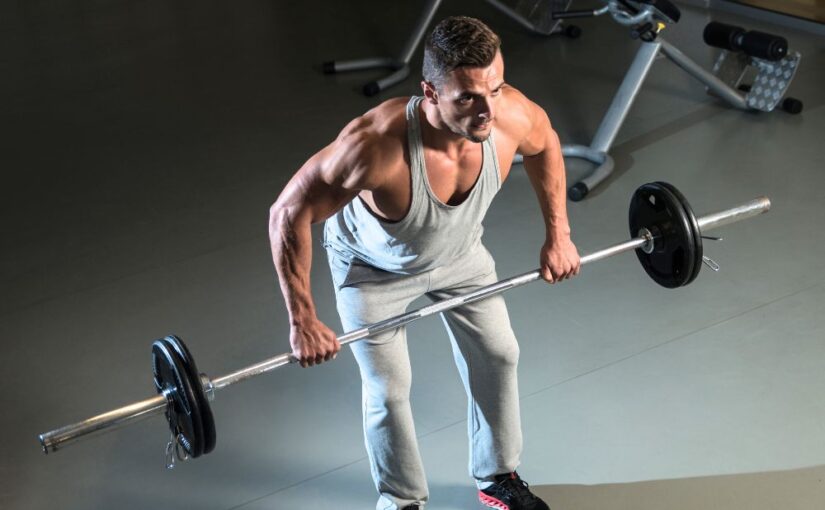Barbell rows are a fundamental exercise in strength training that often gets overshadowed by more popular lifts like the bench press and squat. However, incorporating barbell rows into your workout routine can yield significant benefits for your overall strength, posture, and athletic performance. Here’s a closer look at why barbell rows should be a staple in your training program.
1. Comprehensive Back Development
Targeting Key Muscles
Barbell rows primarily target the muscles of the back, including the latissimus dorsi, rhomboids, and trapezius. Strengthening these muscles creates a balanced physique and enhances upper body strength.
Functional Strength
A strong back is essential not only for aesthetics but also for functional strength in daily activities and sports. Among the key benefits of barbell rows is their ability to develop these muscles in a highly efficient, compound movement.
2. Improved Posture
Counteracting Sedentary Habits
In our sedentary world, poor posture has become increasingly common. Barbell rows engage the muscles responsible for maintaining good posture, particularly the upper back.
Promoting an Upright Stance
By regularly performing this exercise, you can strengthen these muscles, counteracting the effects of prolonged sitting and promoting a more upright and confident stance.
3. Enhanced Core Stability
Engaging Core Muscles
Although barbell rows primarily focus on the upper body, they also engage the core muscles. As you stabilize your body during the movement, your abdominals and obliques work hard to maintain balance.
Injury Prevention
This dual benefit helps build core strength, crucial for overall stability and injury prevention in other lifts.
4. Functional Strength Gains
Real-World Applications
Barbell rows mimic real-world movements, such as pulling and lifting. This makes them a functional exercise that translates to better performance in daily tasks and athletic activities.
Sports Performance
Improved pulling strength enhances your capabilities in sports that require powerful upper body movements, such as rowing, swimming, and climbing.
5. Versatility and Variations
Multiple Exercise Options
One of the significant advantages of barbell rows is their versatility. Variations like bent-over rows, Pendlay rows, and T-bar rows each target slightly different muscle groups.
Preventing Monotony
This adaptability means you can continuously challenge yourself and keep your workouts fresh.
6. Improved Grip Strength
Strengthening the Grip
Performing barbell rows requires a strong grip, contributing to improved grip strength over time.
Practical Applications
Enhanced grip strength benefits your performance in other lifts and has practical applications in everyday life, from carrying groceries to opening jars.
7. Potential for Muscle Hypertrophy
Stimulating Muscle Growth
For those looking to increase muscle size, barbell rows can be an effective hypertrophy exercise. Using progressive overload—gradually increasing the weight lifted—stimulates muscle growth.
Time Efficiency
Targeting multiple muscle groups simultaneously makes barbell rows a time-efficient way to build muscle.
8. Joint Stability and Health
Supporting Shoulder Mechanics
Strengthening the muscles around your shoulder joints can help stabilize them, reducing the risk of injuries.
Maintaining Shoulder Health
Stronger back muscles support proper shoulder mechanics, which is essential for maintaining shoulder health, especially for athletes engaging in overhead movements.
Benefits of Barbell Rows by Fitness Goal
| Fitness Goal | How Barbell Rows Help |
|---|
| Back Development | Strengthens lats, rhomboids, and traps for a balanced upper body |
| Improved Posture | Engages upper back to counteract slouching from sedentary habits |
| Core Stability | Requires core engagement to maintain proper form and balance |
| Functional Strength | Mimics pulling/lifting motions used in sports and daily activities |
| Muscle Growth | Effective for hypertrophy with progressive overload |
| Grip Strength | Improves grip by requiring sustained tension under load |
| Joint Health | Strengthens stabilizers around shoulder joints |
Conclusion
Barbell rows are an excellent addition to any strength training program. They provide comprehensive back development, improve posture, enhance core stability, and promote functional strength. Whether you’re a seasoned lifter or just starting out, incorporating barbell rows can lead to significant improvements in your overall fitness.
Key Takeaway: Focus on proper form to maximize benefits and minimize the risk of injury. Start integrating barbell rows into your routine and experience their transformative effects!
Frequently Asked Questions (FAQ)
Barbell rows help build upper and lower back strength, improve posture, enhance core stability, and support better athletic and functional performance.
Yes, barbell rows can be performed by beginners, provided they start with lighter weights and focus on proper form to avoid strain or injury.
Definitely. Barbell rows help strengthen the upper and middle back, which can help correct poor posture resulting from long periods of sitting and slouching.
This exercise mainly focuses on the latissimus dorsi, rhomboids, trapezius, and rear deltoids, while also activating the core and grip muscles throughout the movement.
Most training programs include barbell rows 1–2 times per week, depending on your goals and overall workout split. Rest and recovery are important for results.
Essential Equipment for Building a Strong Back at Home
Building a strong back starts with having the right equipment. Whether you’re doing barbell rows, pull-ups, or other exercises, investing in quality gear can make all the difference. Below are some recommended products to help you get started:
Barbell Sets
A complete barbell set provides everything you need for a full-body workout. It includes a barbell, weight plates, and collars, so you’re ready for exercises like rows, squats, and bench presses.
Pull-Up Bars
Pull-ups are a fantastic exercise for developing a strong back. With a reliable pull-up bar, you can effectively target your lats, rhomboids, and traps using just your body weight.
Barbells
A quality barbell is the foundation of any serious back training routine. Look for a barbell that fits your strength goals and is durable enough to handle heavy lifting.
Affiliate Disclaimer:
The links above are affiliate links, meaning we may earn a commission at no extra cost to you if you make a purchase.

